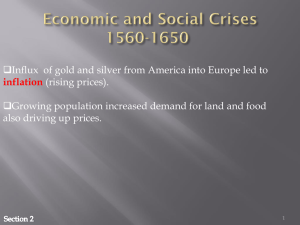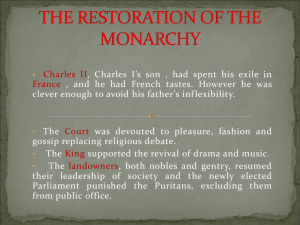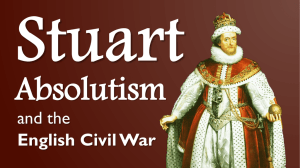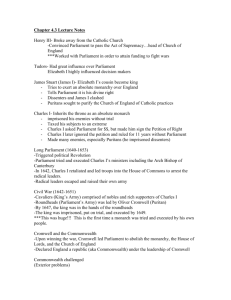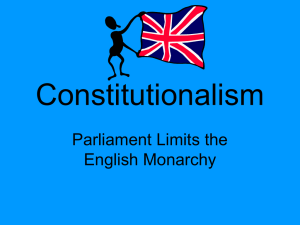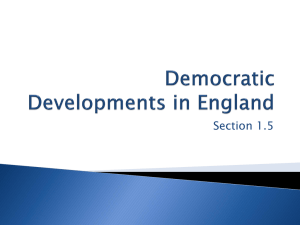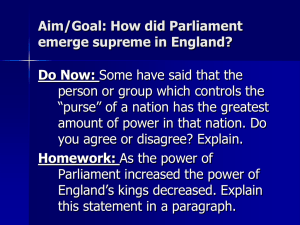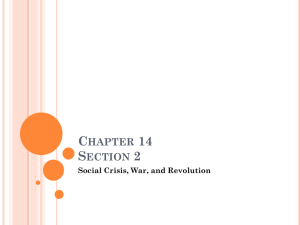How did England become a constitutional monarchy?
advertisement
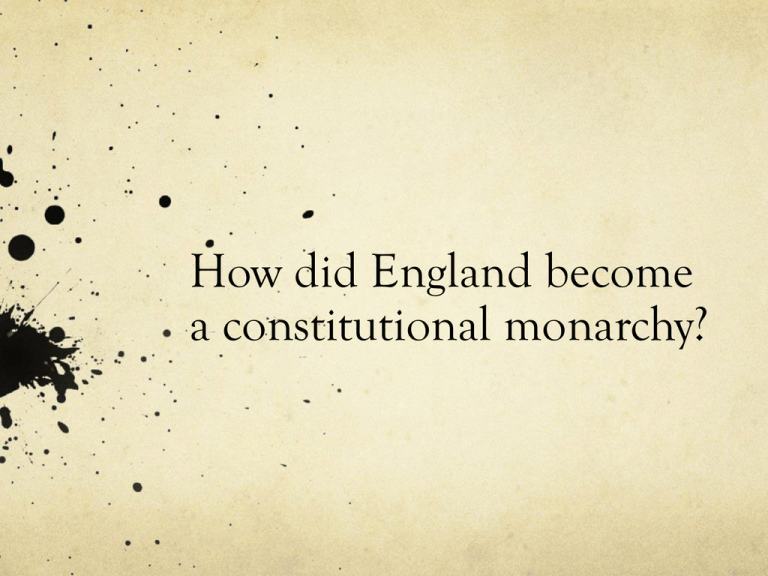
How did England become a constitutional monarchy? The Magna Carta Signed in 1215 by King John Limited the monarch’s authority Granted rights to the nobility – “well known” landed individuals Changes in England Created Tension During the reign of Queen Elizabeth (1533 – 1603) new groups developed that began to demand more political power. The Puritans – who wanted to “purify” the Anglican Church of any remaining Catholic traditions. The Gentry – who were wealthy from agriculture and wanted more influence in the government. James I (1603 – 1625) Makes Enemies After Elizabeth I died without a son, the crown passed to a distant Scottish cousin, James Stuart who was the first a new royal family. Because of continued war with Spain, King James I came to the throne with a huge debt (£ 400,00). He also believed he should have unlimited power, which further irritated the Puritans and Gentry. To control the legal system, James I used a royal court known as the Star Chamber and ignored England’s common law which were laws that had been developed over hundreds of years of court cases and acts of parliament. Problems Continue Under Charles I Jame’s son Charles I (1625 – 1649) agreed to the Petition of Right in (1629) hopes of gaining funds from Parliament. The petition demanded an end to imprisonment without proof, taxation without approval from Parliament, and to the housing of troops with civilians. Charles later broke his word and dissolved (shut down) Parliament. However, when rebellion broke out in Scotland, Charles I was forced to call back Parliament The Long Parliament In 1640, Charles I was forced to call back Parliament which stayed in session for 13 years. It instituted several reforms: Eliminated royal courts Habeas Corpus – need for evidence to keep someone in prison No taxation without approval of Parliament Civil War or English Revolution When Charles I thought the people were back on his side he tried to arrest some of his political enemies in Parliament. This split the country into Royalists and Antiroyalists The Puritan, Antiroyalist Oliver Cromwell eventually seized control with his army and had Charles I executed. Problems With the New Government Cromwell removed many royalists from Parliament and was never able return the power of government to Parliament, instead choosing to run the country as a military dictator to maintain stability. After Cromwell’s death, English generals invited Charles II to return to England as monarch in order to prevent chaos. However, he returned with the limited powers that were set out in the Petition of Right James II Makes a Major Mistake Charles II was able to rule without major problems with Parliament, but his son, James II, was not. James II tried to promote the Catholic Religion without support from Parliament angering Puritans and the gentry. Glorious Revolution Some member of Parliament reacted by inviting James’ sister Mary and her husband William of Orange (from the Netherlands) to become the new monarchs, which they did in 1689. However, as a precondition the William and Mary had to agree to the English Bill of Rights. This was known as the Glorious Revolution because it was relatively peaceful and ensured the rights for the English people, and a constitutional monarchy – powers of the rulers restricted by law

